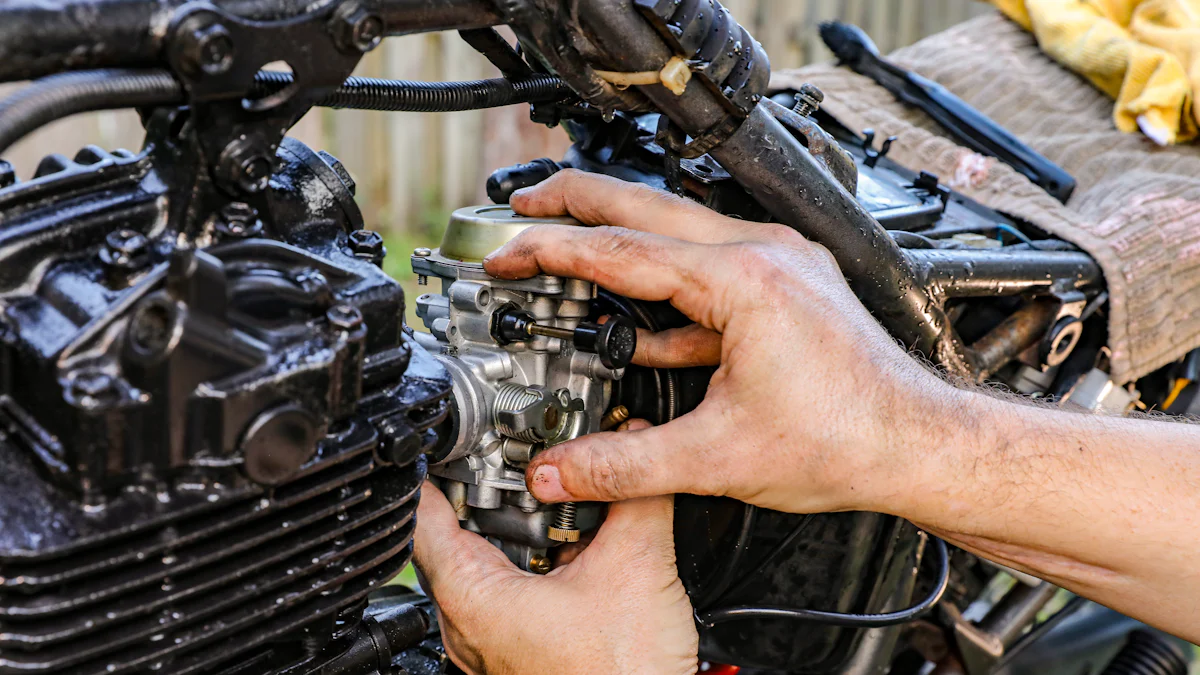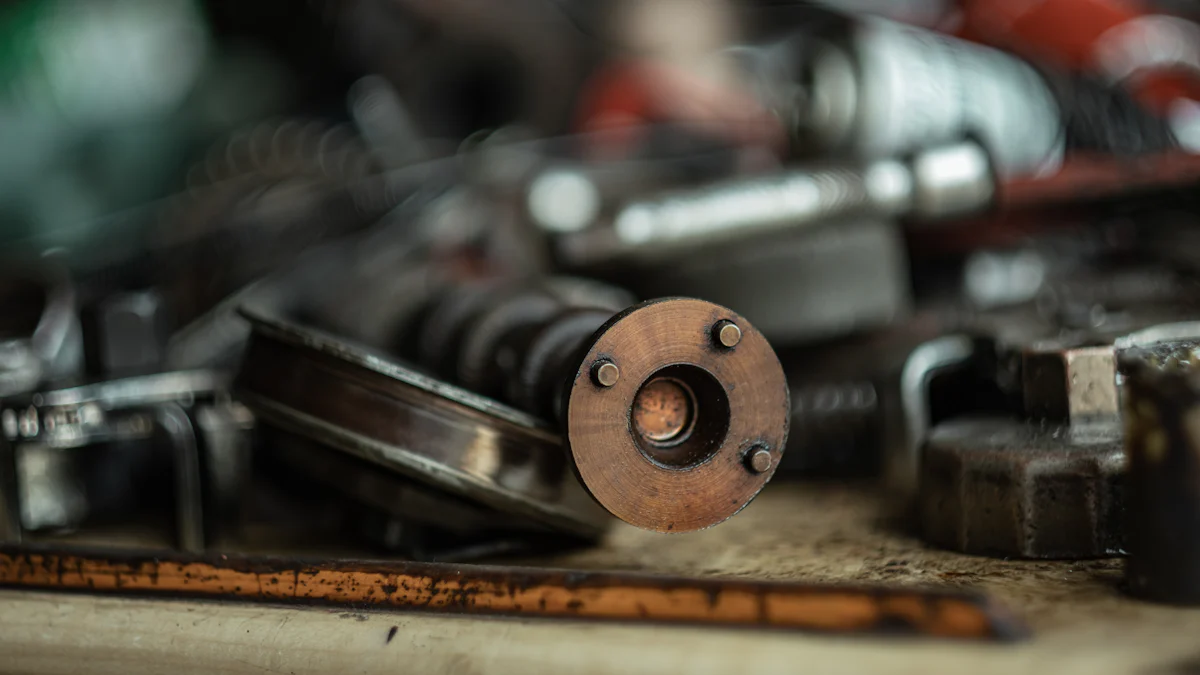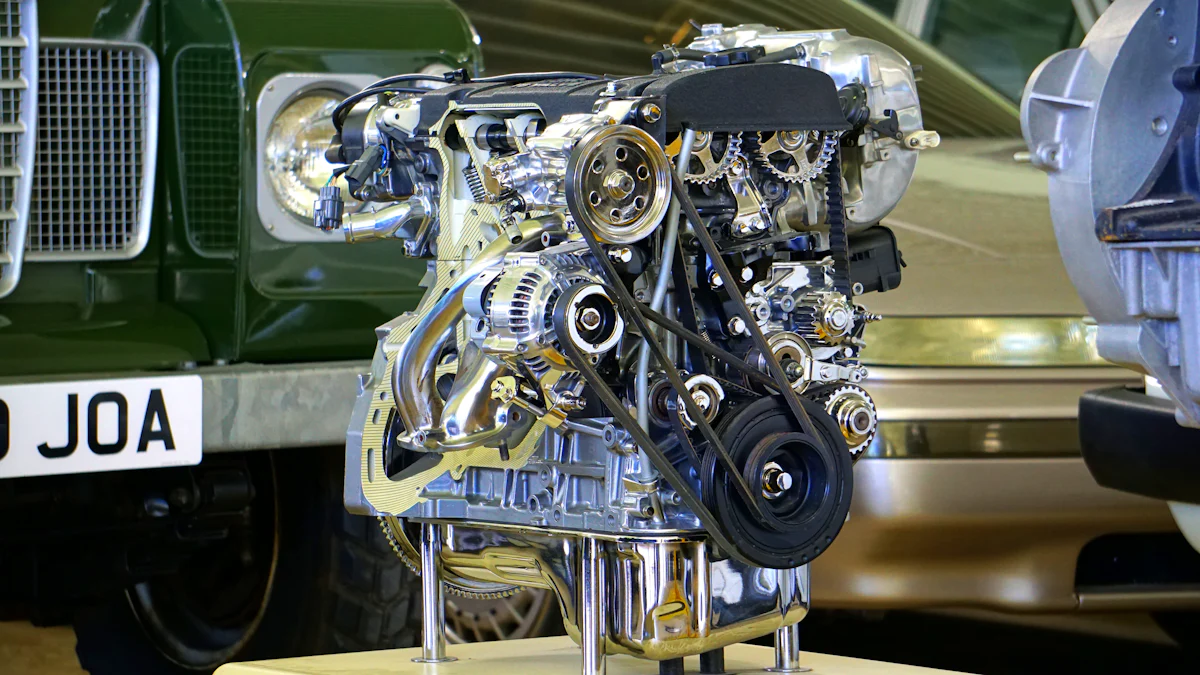
A carburetor screwdriver is an essential tool for adjusting the carburetor on small engines, such as those in chainsaws and string trimmers. Using a carburetor screwdriver allows for precise adjustments to the carburetor, ensuring the engine runs smoothly and efficiently. These tools come in various designs, including 90-degree hex drivers and multi-head screwdrivers for different adjustments. Proper use of a carburetor screwdriver can significantly impact engine performance, fuel efficiency, and compliance with EPA standards.
Understanding Carburetor Screwdrivers
What is a Carburetor Screwdriver?
Definition and Purpose
A carburetor screwdriver is a specialized tool designed for adjusting the carburetor on small engines. The primary purpose involves fine-tuning the air-fuel mixture to ensure optimal engine performance. This tool allows users to make precise adjustments, which can significantly impact fuel efficiency and engine smoothness.
Key Features
Key features of a carburetor screwdriver include a detent mechanism that provides an audible click at each rotation point. This feature helps users make accurate adjustments. Some models, like the Carburetor Tuning Screwdriver, have a magnetic base to prevent dropping the tool into the engine bay. Tools designed for two-handed operation are great for beginners and novices. Additionally, some screwdrivers come with a long reach or extended shaft to access hard-to-reach areas within the carburetor.
Types of Carburetor Screwdrivers
Flathead Screwdrivers
Flathead screwdrivers are commonly used for adjusting carburetor screws. These tools have a flat tip that fits snugly into the screw slot, allowing for precise adjustments. A 1/8″ blade screwdriver with a snug-fitting tip is recommended for carb jets. Pressing down and turning simultaneously with a quick jerk helps remove the jet in one piece.
Phillips Screwdrivers
Phillips screwdrivers feature a cross-shaped tip that fits into the corresponding screw head. These are particularly useful for screws that hold the carburetor together. Japanese screwdrivers fit the screws in Mikuni or Kehin carbs better. For these screws, using a Vessel or Anex screwdriver in #2 Phillips is suggested.
Specialty Screwdrivers
Specialty screwdrivers are designed for specific carburetor adjustments. For example, the DIY 90-Degree Carb Screwdriver is critical for adjusting the air-mix screws on BS34 carbs. This tool allows easy access to the hard-to-reach sync screw between linked carb bodies. Such specialized tools are essential for achieving precise adjustments in complex carburetor systems.
How to Use a Carburetor Screwdriver

Preparation Steps
Safety Precautions
Safety must come first when using a carburetor screwdriver. Wear protective gloves to prevent burns and cuts. Safety goggles protect the eyes from debris. Ensure the work area has proper ventilation to avoid inhaling harmful fumes. Keep a fire extinguisher nearby in case of emergencies.
Warming Up the Engine
Warming up the engine ensures accurate adjustments. Start the engine and let it run for about 5-10 minutes. This process allows the engine to reach its optimal operating temperature. A warm engine provides more precise feedback during adjustments.
Step-by-Step Guide
Identifying Adjustment Screws
Locate the adjustment screws on the carburetor. These screws control the air-fuel mixture and idle speed. Typically, carburetors have three main screws: the low-speed screw, high-speed screw, and idle screw. Consult the engine manual to identify these screws correctly.
Making Initial Adjustments
Use the carburetor screwdriver to make initial adjustments. Turn the low-speed screw clockwise until it lightly seats, then back it out one and a half turns. Repeat this process for the high-speed screw. Start the engine and let it idle. Adjust the idle screw to achieve a steady idle speed.
Fine-Tuning the Carburetor
Fine-tuning the carburetor involves making small adjustments. Turn the low-speed screw in quarter-turn increments. Listen to the engine’s response after each adjustment. Adjust the high-speed screw similarly while revving the engine. Aim for a smooth and responsive throttle.
Tips for Precise Adjustments
Listening to Engine Sounds
Listening to engine sounds helps in making precise adjustments. A well-tuned engine produces a smooth and consistent sound. Popping or sputtering indicates improper adjustments. Use the carburetor screwdriver to correct these issues by fine-tuning the screws.
Using a Tachometer
A tachometer provides accurate RPM readings. Attach the tachometer to the engine according to the manufacturer’s instructions. Use the carburetor screwdriver to adjust the screws while monitoring the RPM. Aim for the recommended RPM range specified in the engine manual.
Troubleshooting Common Issues

Identifying Problems
Engine Running Too Rich
An engine running too rich has an excessive fuel mixture. This condition causes black smoke from the exhaust. The engine may also have a strong fuel odor. Poor fuel efficiency and sluggish performance often accompany these symptoms. Use a carburetor screwdriver to address this issue.
Engine Running Too Lean
An engine running too lean has an insufficient fuel mixture. This condition results in a high-pitched sound from the engine. The engine may overheat and stall frequently. White or gray exhaust smoke indicates a lean mixture. Adjustments with a carburetor screwdriver can resolve this problem.
Solutions and Fixes
Adjusting Idle Speed
Adjusting the idle speed helps stabilize the engine. Locate the idle screw on the carburetor. Turn the screw clockwise to increase the idle speed. Turn the screw counterclockwise to decrease the idle speed. Use a carburetor screwdriver for precise adjustments. Monitor the engine’s response after each turn.
Correcting Fuel Mixture
Correcting the fuel mixture ensures optimal engine performance. Identify the low-speed and high-speed screws on the carburetor. Use a carburetor screwdriver to adjust these screws. Turn the low-speed screw clockwise until it lightly seats. Back it out one and a half turns. Repeat this process for the high-speed screw. Start the engine and let it idle. Fine-tune the screws in quarter-turn increments. Listen to the engine’s response after each adjustment. Aim for a smooth and responsive throttle.
Benefits and Maintenance Tips
Advantages of Using a Carburetor Screwdriver
Improved Engine Performance
A carburetor screwdriver enhances engine performance. Precise adjustments to the air-fuel mixture optimize combustion. This leads to smoother engine operation. The engine responds better to throttle inputs. Users experience fewer stalls and misfires. Proper tuning with a carburetor screwdriver ensures reliable engine performance.
Fuel Efficiency
Using a carburetor screwdriver improves fuel efficiency. Accurate adjustments reduce fuel consumption. The engine burns fuel more efficiently. This results in fewer emissions and better mileage. Users save money on fuel costs. A well-tuned carburetor also meets EPA standards.
Maintenance Tips
Regular Cleaning
Regular cleaning of the carburetor screwdriver ensures longevity. Dirt and debris can affect tool performance. Clean the screwdriver after each use. Use a soft cloth to wipe down the handle and shaft. For stubborn grime, use a mild cleaner. Avoid using harsh chemicals that can damage the tool. Proper cleaning maintains the tool’s accuracy.
Proper Storage
Proper storage of the carburetor screwdriver prevents damage. Store the tool in a dry, cool place. Use a toolbox or storage case for protection. Keep the screwdriver away from moisture and extreme temperatures. Proper storage extends the life of the tool. A well-maintained tool provides consistent performance.
A carburetor screwdriver offers numerous benefits. Precise adjustments improve engine performance and fuel efficiency. Regular maintenance ensures consistent results. Clean the tool after each use. Store it in a dry, cool place. Practice using the carburetor screwdriver frequently. Mastery of this tool enhances engine reliability. Proper tuning meets EPA standards and reduces emissions. Continuous practice leads to better skills and confidence.
See Also
Scooter Upgrades: High-Quality Parts for Optimal Performance
Discovering Diverse Sock Options for Both Genders
